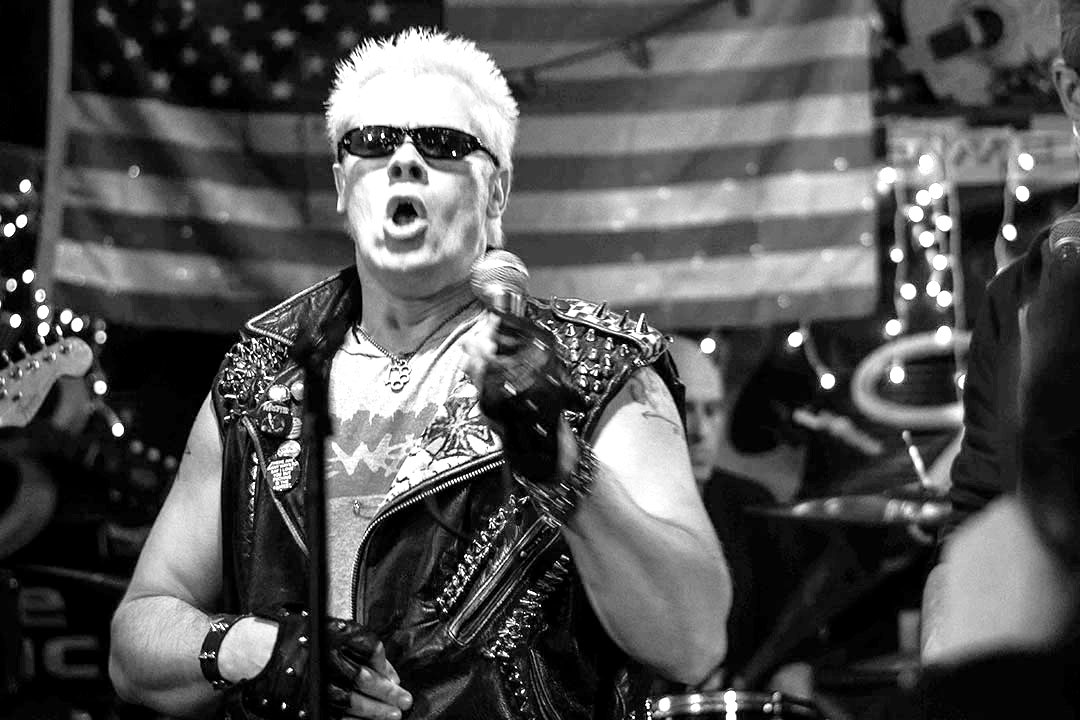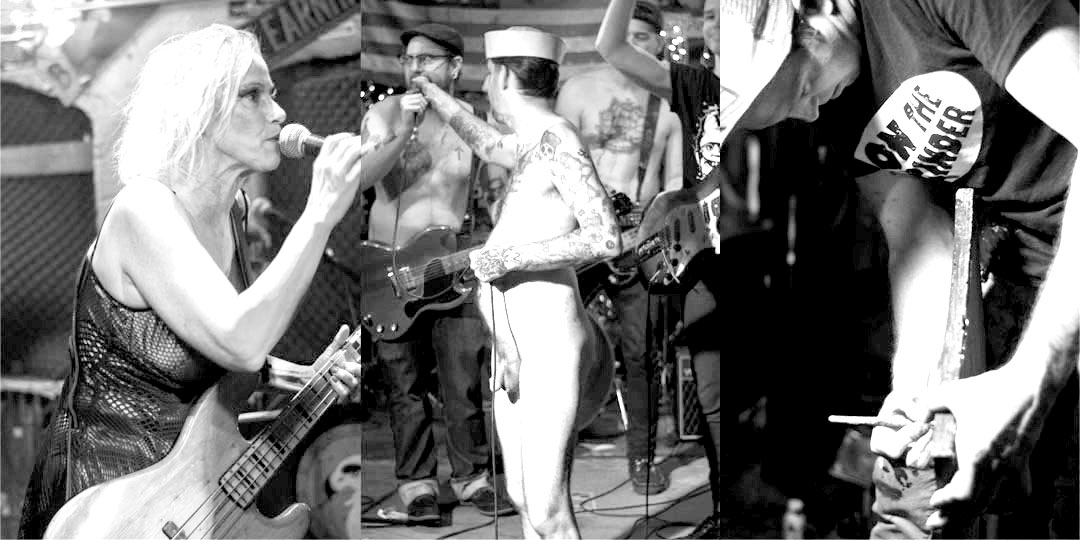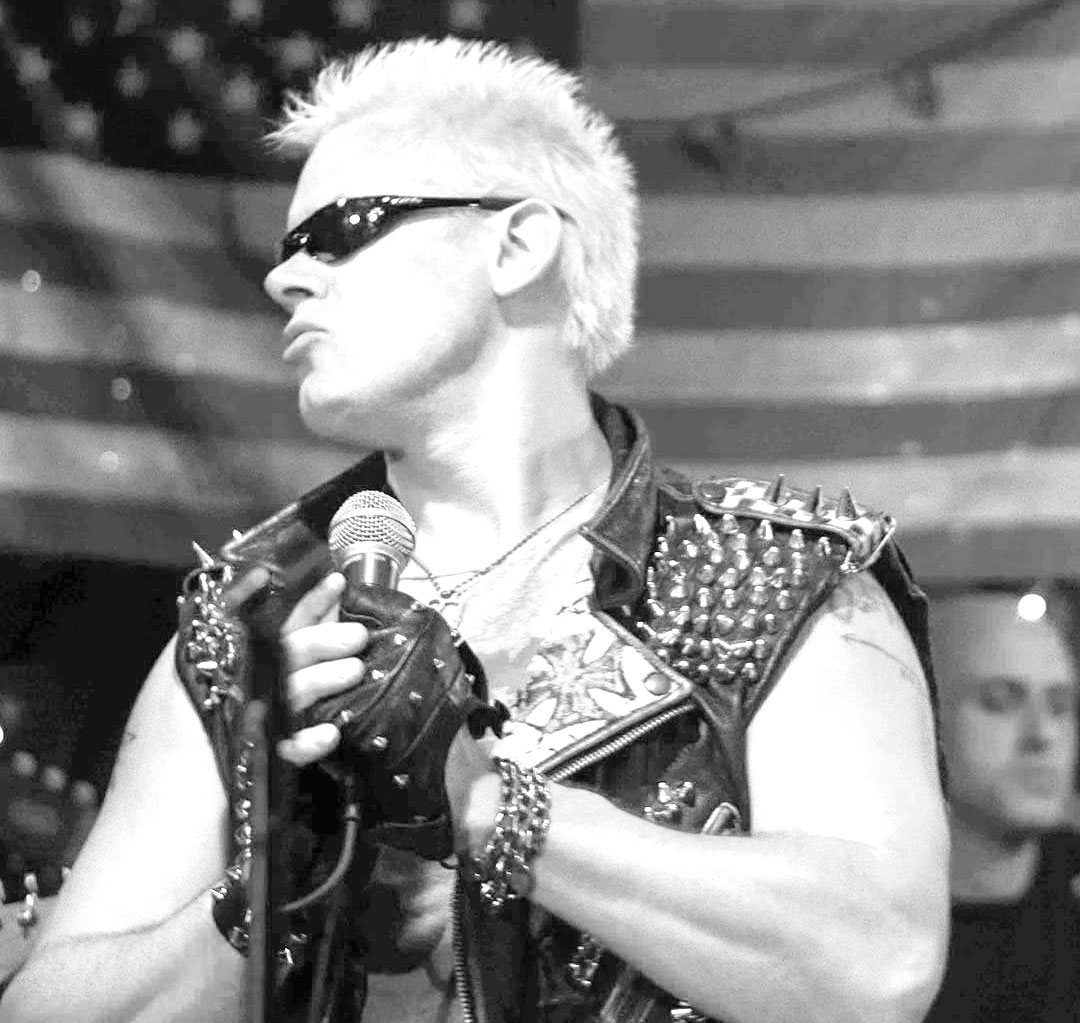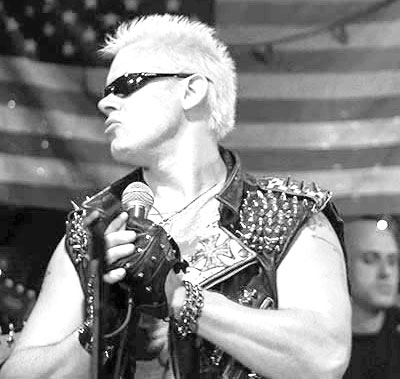In “What Happened to the Punk Rock?”, Spike Polite sings that someone’s closed down CBGB, cleaned up Tompkins Square Park and turned everything that he used to do for fun into a crime. He’s disappointed and perplexed. He wants to know how this could have happened. Spike has more of a right than other nostalgic New York punks to ask these questions because he isn’t being precious; he really wants to know. After all, he was away in prison for 11 years while it happened.
Jared Errington was found not guilty of the murder of Taite Walkonen. However, because he used the victim’s credit cards to satisfy his heroin addiction, the 28-year-old was sentenced to four to 15 years for robbery in 2000. At the time, Spike — which is how Errington is better known in the music world and downtown — was living with Walkonen, who’d developed an obsession with the punk crowd. The 51-year-old followed Spike and his friends, taking endless photographs of his band, Sewage. Walkonen’s family did not understand why the classically trained pianist and former NYU professor was so fascinated by a band once called Humyn Sewage, but apparently there was some homosexual interest because Walkonen asked Spike to arrange an S&M encounter in July of 1999. Once Walkonen was taped to a chair, Jonathan Cardwell, a 20-year-old punk whom Spike had met at one of his gigs and brought home, stabbed the older man to death. Cardwell, who had previously escaped from prison in Tennessee, is now serving life. Spike did 11 years and four months in New York State (sharing four of those years with me in Greenhaven Correctional Facility).

As jarring as any arrest, this particular incident also arrested Spike’s musical career, which looked like it was about to take off in the early 2000s. His band Sewage is respected for its authenticity, and Spike Polite is a punk’s punk. Back in 1991, when he was a runaway from a difficult upbringing upstate, the band formed on the benches of Tompkins Square Park. With the lines for heroin, riots by squatters and GG Allin eating his own shit on stage, the now-gentrified Lower East Side was unimaginable then and Sewage was in the middle of it all. (“Humyn” was dropped from the band’s name in 1993.) In fact, Sewage opened for GG Allin and the Murder Junkies on the very night Allin died of a heroin overdose. The entire scene had been expecting his demise, but Spike was there when it actually happened. He was also present at other hallmarks of the era, like the ‘91 Memorial Day Riot in Tompkins Square Park. He played the Pot Parade with Cypress Hill, and he led a tour of the Lower East Side which is still available for view at the Rock and Roll Hall of Fame. Sewage played with Joey Ramone and appeared in the commercial for Spike Lee’s film Summer of Sam. (The mohawks helped get that gig.)
By 1999, Spike Polite was not just a neighborhood fixture. He was in the music video for the Jessie Camp and the 8th Street Kidz song “See Your Around,” which MTV aired on the hour for three months that year — meaning that, during the time of the murder, you could see Spike singing or in handcuffs depending on which channel you were watching.

The arrest ended Spike’s finger-hold on fame. Coincidentally, Spike and I shared a criminal defense attorney, though not at the same time; then we met in the yard at Greenhaven Correctional Facility. It seemed to me that Spike was not doing well in prison. He is a big guy, but his Wiccan faith made him an oddball to the “respectable” criminals. He liked to talk about Sid and Nancy, and The Casualties, and which of the Ramones was actually talented. The rest of the guys just didn’t understand Spike.
I did my best to help. At a particularly low moment, Spike entered a program where he lived in a dormitory for the mentally ill, where I was working as a porter and group leader. I felt it was no place for him, and they were medicating him to the gills. Eventually Spike returned to the general population, but it wasn’t all misery. Every prison has a musical program, usually a room with a couple of beat-up instruments. Spike managed to get his hands on a guitar, and that is when I saw him truly happy despite the surroundings. Happy and talented — no one in there could compare to his level of play or his energy. Of course, this did not lead to great popularity. In that world of mediocrity, classic rock is usually the soundtrack. Sometimes there are concerts in the yard and you get to hear “Hotel California” out of tune. But Spike wanted to do originals, to write music, to create. Being head and shoulders above the amateur musicians there did nothing to add to his reputation, strange as it may seem. One would think that criminals are the ultimate end of the counter-cultural spectrum, but conformity is the name of the game on the inside.
Spike got out in 2010, but because of his marriage to an unstable woman (“We were the Sid and Nancy of the ‘90s” is Spike’s telling), he ended up serving a violation of parole. Now he is finally close to the end. And his career?
During the time Spike was away, much happened that would support the contention that punk is indeed dead. CBGB's replacement by a luxury fashion store, which has been harped on endlessly by nostalgists, was a real blow to the newly released Spike because for him it actually was a spiritual home of sorts; some of his greatest moments were on that stage where leather shoes are now sold. Spike similarly had to discover a defanged St. Mark’s Place, where the junkies have been swept to the outer boroughs and where even drinking a 40 ouncer out of paper bags is an arrestable offense. Now there is a website now called Punk Match, which claims to be the “hottest” punk dating community, and Mohawks are used to display advertisements, and Johnny Rotten has starred in a commercial for butter. All around town, the word was out: Punk is dead.
But no one had told Spike. He got the news once he was released, but he had already spent the last 11 years planning his return to punkdom. Despite the limitations of parole, Spike rebuilt Sewage with a new line-up and continues to play shows. I’ve been to a few; it’s not a stadium-sized audience, but the people who show up don’t believe that punk is even ailing. In venues like Otto’s Shrunken Head, which also hosts the Rock ’n’ Roll Girlie Show with go-go dancers like Bad News Baby (who is pregnant), and Hank’s Saloon, where we saw naked, bloody sailors, it’s not a nostalgia trip or a tribute. It’s a scene that feels very much alive.


I asked Spike what he thought about it. We both served more than a decade and felt like a pair of Rip Van Winkles returning to a very changed New York City. Rip slept through the American Revolution; we, according to some, missed the death of punk. But Spike thinks that’s ridiculous:
Punk rock's main attitude was of an angry person on the street during a bad economy. Some people say that punk died in 1979, but waves and waves of punk rock resurface every couple of years — just as the hippies have folk music, which resurfaces in cycles. ... I was influenced by punk rock as a child, and it was for me. The country was doing badly and so was life in general, including my life.
Punk rock never died. If you were born during the times that punk rock was popular, then that influenced your generation. There have been several cycles of culture that were dominated by punk rock and many more to come. Just as hip hop rises and falls in popularity with culture, so does any other form of musical expression. Those who participated in a cycle of punk rock and now say it is dead will always smile when they hear the Ramones or the Sex Pistols songs being played. It never died. The next wave of punk is being created every time someone hears a punk rock song that they like ....

He may not exactly be the savior of a dying art form, but Spike definitely is doing his part in keeping punk alive — and his audiences are voting for its continued existence with their feet, kicking and dancing and flailing. Spike’s last show that I attended featured punk icon Gina Harlow, who’s been at this game since the very beginning, as well as The Afterbirth (the nude sailors), who were probably born around the time Harlow first growled at a crowd. There was also Jesse Mosher (which, yes, is his real name), who paints to music.
I asked Mosher about the idea that punk was dead:
It all depends on who is doing it and what the reasons for them doing it are. There are people who are genuinely against the grain of society and make art that is true to those beliefs. These people put real aggression and violence into their art. ... The vast majority of people who make this kind of art today do it to be cool or seen as badass while the originals do it because they are badass. These people intimidate the vast majority of "fellow" punkers, so they are often marginalized or avoided instead of being revered as the originators of the world's most popular form of rock 'n’ roll. Spike is the real deal.
While Mosher prefers to paint the Ramones (there are thousands of portraits in his portfolio), he now does it to the music of Spike Polite. Music is his muse, and today the songs are by Sewage.


According to some, punk rock died — hell, maybe as long ago as 1977. But while Jared Errington was inside, paying for his crimes, punk rock lived. It lived in his head and in his hands when he held that beat-to-shit, taped-up guitar from the Greenhaven Correctional Facility music room. And now, when Spike appears on stage with Sewage, punk lives. It’s not Spike who determines this; it’s the audience. Even if someone told them that punk was dead, they coudn’t hear it over the music.
Daniel Genis was born in New York City a few months after his parents emigrated from the Soviet Union in 1977. He attended Stuyvesant High School and New York University, graduating with a degree in history and French. He began a career in publishing, though soon traded in his tennis hobby for a heroin habit. During one bad week of 2003, he committed five amateur robberies, for which he served 10 years in prison. During his lost decade, Daniel wrote a novel called Narcotica and translated from the Russian for commissary money.
These days, Daniel is living with his wife in Brooklyn and writing for places like the New York Daily News, The Paris Review, Newsweek, Vice, The Daily Beast and Deadspin while shopping around his novel and memoir. He can be reached at genis5000@gmail.com as well as his Facebook page.
(Image Credits, from top: Facebook; rest courtesy of Petra Szabo)